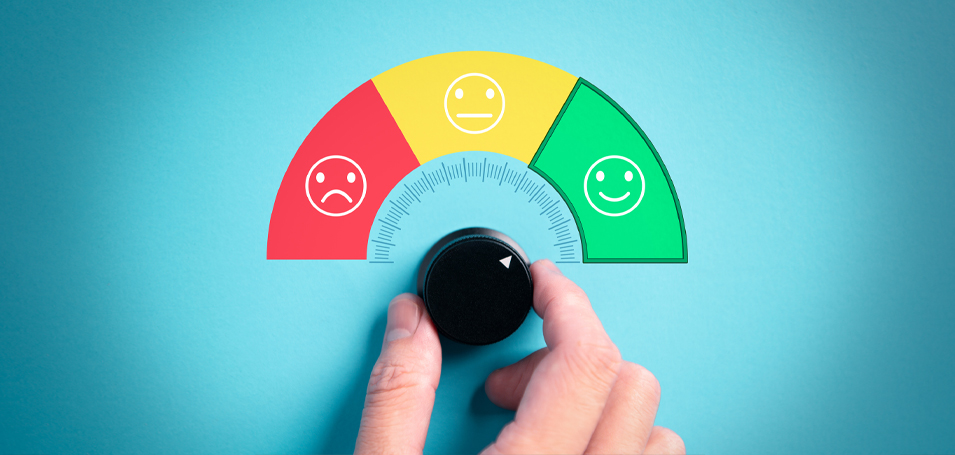When you’re in the business of delivering learning to your customers—whether they are improving professional skills, gaining certifications, exploring interests—thinking about your offering as a product can pay big dividends.
And, as with any product, that means planning a feature set, bringing the product to life, pushing it out into the marketplace, paying attention to feedback, and optimizing the feature set based on usage and needs. Then, repeat ad infinitum.
Throughout this cycle, how your individual learners behave and what they need along their learning paths will begin to fall into natural groupings of behavior. These groupings become patterns that you can use to build and deliver online learning that scales. To do this most effectively, you need to develop a good sense of your customer profiles.
What are customer profiles?
“The best thing you can do for your product is to understand the people who use it and, more importantly, why they need it,” says Jessie Gold, Product Manager at Thought Industries. “Focusing on the problems they are facing will help you shape your product roadmap to support your existing customers and provide solutions that empathize with your market.”
This is where customer profiles come into play. Also known as personas, customer profiles are semi-fictional portraits of the audience you are trying to deliver for. Profiles utilize the behavior patterns you observe and combine that with information from research in order to detail the needs, trends, and characteristics of a specific group of learners. Then, a profile is typically packaged as a make believe person, complete with an evocative name, photo, and information sheet.
A good profile presents a portrait of a unique person who is, in reality, a personification of a target audience. The kinds of information presented should include details such as the needs of the audience, common challenges they face, possible objections that would keep them from embracing your solution, and other qualities that help paint the picture.
Hubspot offers a breakdown of what makes a good customer profile—or “Buyer Persona” in their parlance: “What Does a Great Buyer Persona Look Like? Dissecting 3 Real-Life Examples.”
As you build your profiles, try to key in on characteristics that will help you make decisions. If a detail inspires what kind of learning experiences to offer, how to deliver those experiences, or ways that you could make them more relevant, it’s worth including. A few details to bring some whimsy to their character may be fun to include, as well, but remember that customer profiles are not creative writing exercises.
They’re a way for you to put yourself in their shoes, to imagine their struggles—and the possible solutions—from their perspective. A realistic representation of the ideal audience—with a name, a face, and a set of traits—ensures that you break out of your own way of thinking. “Getting out of the building,” a concept pioneered in Steve Blank’s classic business book “The Four Steps to the Epiphany,” is incredibly important in customer discovery and product planning. The main takeaway of GOOB-ing, as it’s sometimes called, is that product planning absolutely must capture the voice and perspective of your customers.
Even if your journey outside your office walls starts with only a new frame of mind, it’s still invaluable. You’ll be able to make sure that the processes of product strategy and optimization are squarely aimed towards a real audience with real challenges, hopes, and dreams.
How to Create a Customer Profile
The quickest way to get started on building your customer profiles is to begin asking some important questions. Answer them as best you can through a combination of knowledge you already have about your audience and research—and don’t worry about perfection.
It’s important to put some stakes in the ground to mark the territory you plan to build within. You can refine the boundaries of your learning offering over time, maybe shrinking and maybe expanding.
Ideally, some version these questions also became the ones you ask of a cross-section of your current customers, perhaps through surveys or in-person conversations.
Here are a few to get your customer profiles started:
- What is your audience challenged by?
- Why would they need online learning?
- Would they resist online learning for any reason?
- Where do they typically look when they’re struggling with something?
- What language would this customer use to identify their current problem?
- What kinds of learning is most likely to resonate with them?
- What is their greatest hesitation in trying out your offering?
- What is the best way to engage with this customer?
Initially, think of your audience as one group. Try to find answers in a way that represents the most common perspectives across that whole group. If you uncover multiple angles or what-if scenarios, those may dictate the need for a second customer profile to cover that distinction, or a third. However, tread lightly. If you dig in and create twelve profiles that constantly need referencing and updating, you’ve done yourself a disservice. Ideally, you should be able to summarize your audience into a handful of distinct profiles, preferably no more than three or four. The differences only need to be represented if they might affect how you’ll make a decision.
As a simple example, imagine you’ve determined that half of your audience learns best from videos and the other only prefer to read. That clear distinction in learning styles and attention-spans almost definitely dictates that you have two separate profiles to work on.
Build the business case for your learning product
Customer profiles can help you understand how your product offerings cater to the needs and challenges of your audience. It’s a logical connection, really. When you have a deep grasp of what they hope to gain, you can plan and predict how to help them achieve that goal.
At the essence, this is their true power: Customer profiles help you embrace the challenges of your audience as your challenges.
When the product offering, courses, and content that you design is focused on helping your real audience answer their real needs, the business case is baked into your planning. You are building something to solve their problem—ideally better than anyone else has—and they will reward you, ideally monetarily, for that solution.
As you begin planning a new learning initiative—or qualifying and optimizing an already running one—measure against the needs of your personas to identify the topic areas and learning content types that will have the most impact on your business.
- What are the gaps in your offerings that could become new learning products?
- How can you build better products that offer more value to the persona?
- How should what your audience is asking for influence your product roadmap?
- What do you have that already answers their challenges? Could it do that better?
- Is there anything in your current offerings that no longer resonates? Is it time to sunset it rather than continue supporting it?
- Is your current audience still the right target for your vision of the product? Do they need to change, or do you?
Growth and realignment are a natural part of scaling your online learning business. Deciding to leave a certain segment of learners behind might feel challenging and uncomfortable—especially if they helped you get to where you are. Clear customer profiles can help you make that choice with confidence and clarity.
Fine-tune your marketing plans
Learning about where the audience you want to reach is already looking can inform how to get your message in front of them. It’s important to meet your customers where they spend their time, but that may be hard to uncover.
For instance, they may identify themselves as social media users, but one platform suits their field or area of interest more than another. The natural inclination is to build a presence everywhere, but that can be a mistake of spreading yourself too thinly. Don’t waste your time—or online advertising dollars—publishing your marketing message to the places your audience doesn’t hang out. Customer profiles help you focus on understanding which channels are worth your resources.
Knowing where your audience is gathering can inform your approach and message. If competitors in your field are commanding attention already, you might pull some cues from the way they engage in the conversation. Then, use those lessons to either adopt a similar style—since it’s presumably working—or go in a different direction to differentiate your offering, stand out, and embrace your own voice.
Spread customer profiles across your organization
The work involved in creating profiles won’t do much for your organization if you don’t share it. Make them easily consumable and quick at hand for anyone who is planning public-facing output. Your Product, Marketing, and Sales teams should all be able to draw from their understanding of the personas you’ve identified to informs decision-making in their day-to-day.
Be prepared for the customer profiles you develop to become the set of guiding principles and assumptions used across your organization. Before long, your user profiles will be influencing all the efforts that support your learning business.
References:
- https://www.prodpad.com/blog/how-to-create-great-user-personas/
- http://www.convinceandconvert.com/social-media-strategy/how-to-create-customer-profiles-to-reach-your-target-audience/
- https://us.accion.org/resource/your-customer-profile-how-find-your-market-niche/




